Ohio Turtles
This post contains links to affiliate websites, such as Amazon, and we receive an affiliate commission for any purchases made by you using these links.
There are 12 species of turtles in Ohio. Read on to learn about all Ohio turtles and learn how to identify turtles in Ohio.

Turtles in Ohio
Turtles may seem low-key, but they are truly fascinating animals. Did you know that turtles live all over the world? There are currently 12 species of turtles in Ohio. We’ll go over all the specifics of Ohio turtles in the sections below.
When it comes to turtles and tortoises you might be wondering if they are the same. They are not. Technically speaking, the word “turtle” is an umbrella-type of term that includes both groups of turtles and tortoises.
About Turtles in Ohio
Turtles are actually some of the oldest animals around. They are among the oldest groups of reptiles. Fun Fact: some turtles can live to be 150+ years old! Some of the largest turtles can weigh more than 1000+ pounds.
Turtles also have a second shell. They have their outer shell, which we can see. They also have a lower shell which is called the plastron.
Have you ever heard a turtle make a noise? Turtles actually are not silent. They make a range of noises, depending on the species.
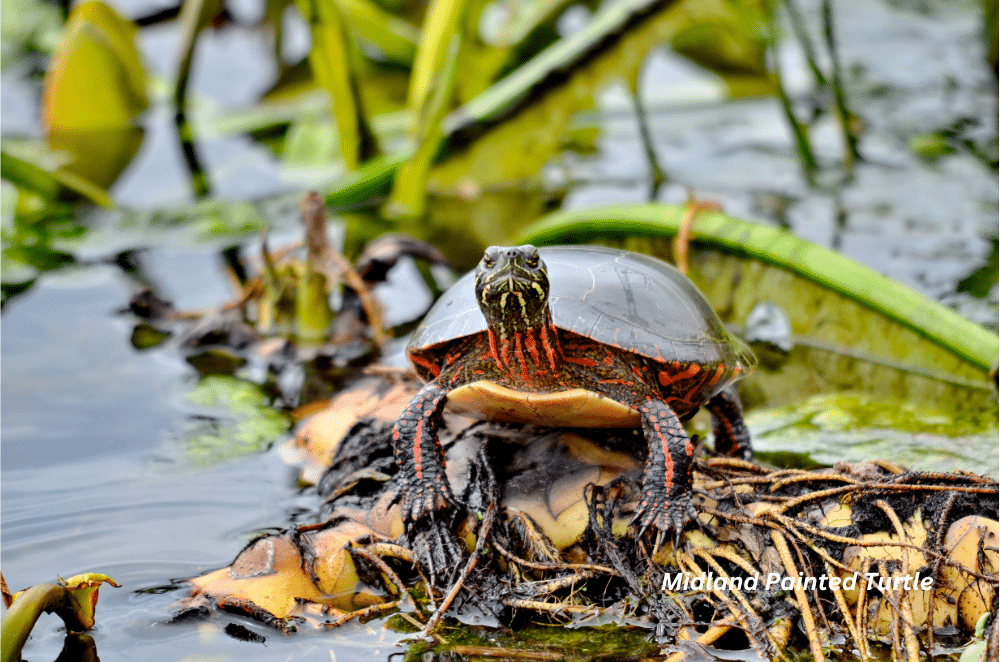
Midland Painted Turtle
- Chrysemys Picta Marginata
The Midland Painted Turtle is the most common of the turtles in Ohio. Midland Painted Turtles like to lay in the sun, so chances are, if you’ve been on a nature walk and seen a turtle in the sun, it is probably one of the many Midland Painted Turtles in Ohio! These turtles like to lay on logs near the water’s surface
Red-Eared Slider
- Trachyemys Scripta Elegans
The Red-Eared Slider has a thick red marking on the side of its head behind its eye (or where its ear would be). This makes this Ohio turtle easy to identify! It does not have any other red markings on its shell, neck, legs, etc. The dark green, almost black color of the shell is similar to the Midland Painted Turtle. These turtles are found mostly in southwest Ohio.
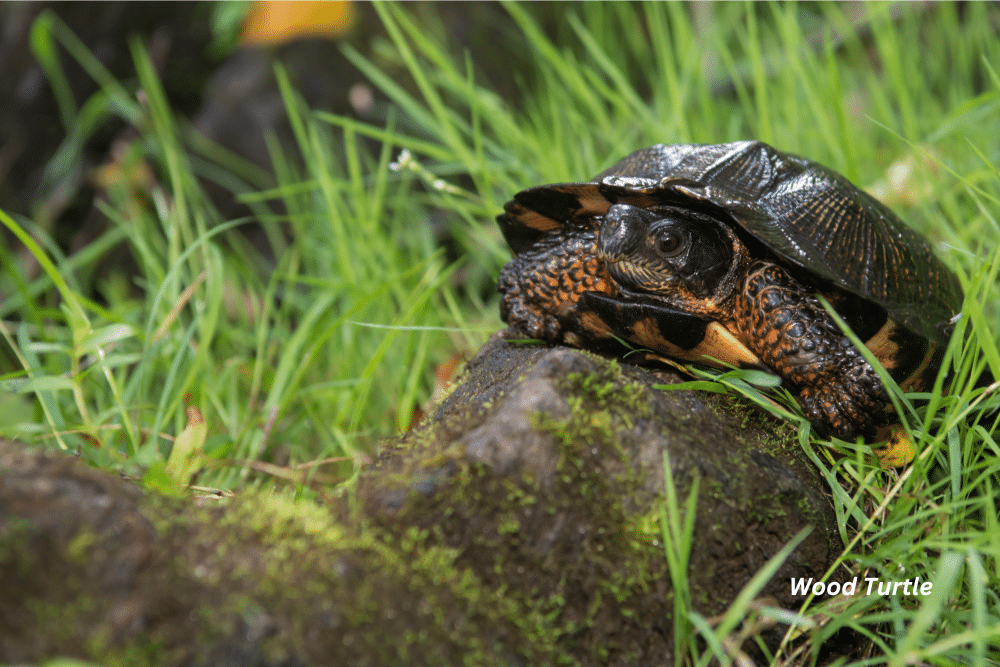
Wood Turtle
- Glyptemys Insculpta
These turtles are on the endangered list. They live 40+ years and weigh anywhere between 1-3 pounds. They have a brown outer shell and burnt orange colored skin. Their outer shell ranges from just over 6 inches to almost 10 inches in length.
Spotted Turtle
- Clemmys Guttata
The Spotted Turtles are quite small, their outer shell is usually between 3 inches to just short of 5 inches in length. The outer shell has a black-to-bluish color and it is sprinkled with lots of yellow dots.
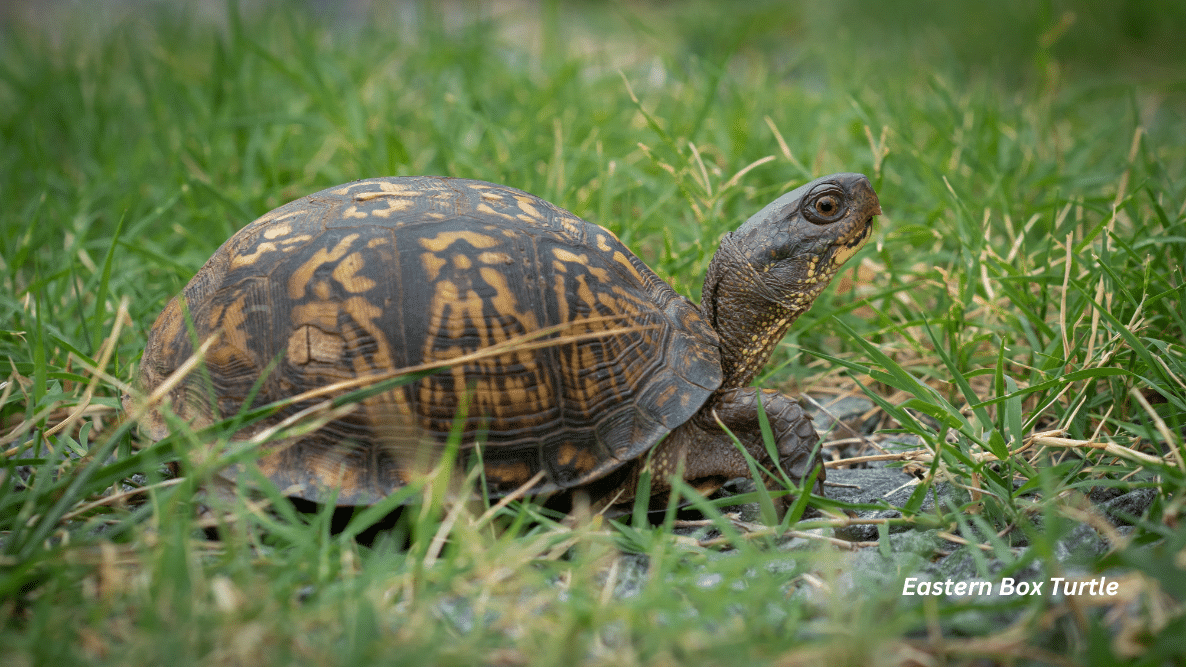
Eastern Box Turtle
- Terrapene Carolina Carolina
The Eastern Box Turtle is found in southern and western Ohio. There is debate on whether the eastern box turtle is a native species in the northeast region of Ohio, The outer shell of the Eastern Box Turtle is dome-shaped. The turtle generally reaches between 4.5 inches and 6 inches in length. The outer shell of this turtle is usually brown/black and it has some yellow markings.
Blanding’s Turtle
- Emydoidea Blandingii
The Blanding’s Turtle has a darker outer shell with yellow speckles that often come together to form streaks on the turtle. The turtle has a yellow throat and chin. The outer shell reaches between 7 inches to 9 inches in length.
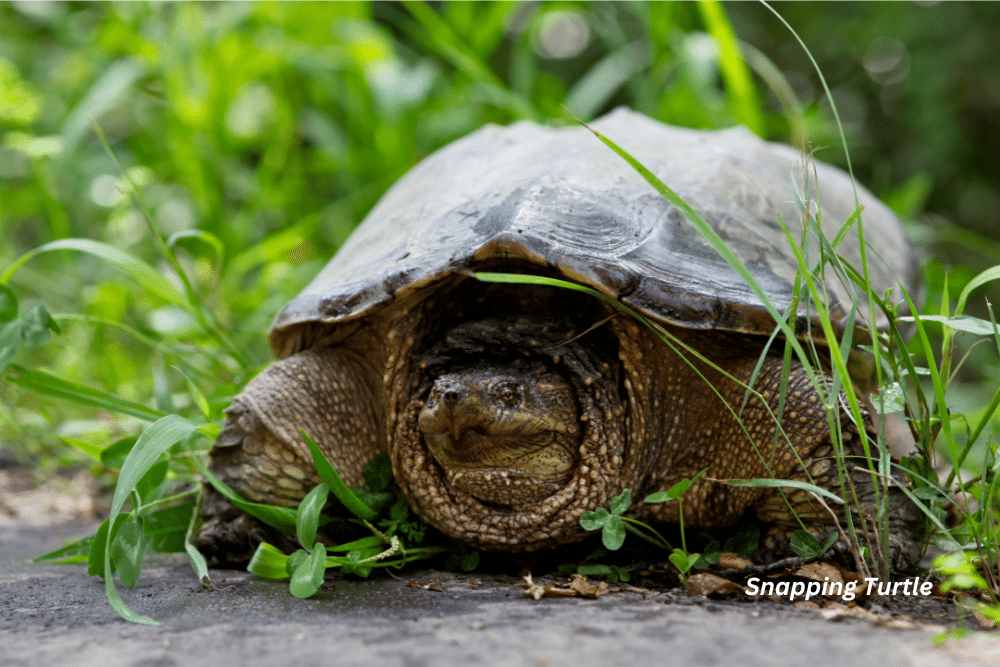
Snapping Turtle
- Chelydra Serpentina
The Snapping Turtle is the largest species of turtle in the state of Ohio. These turtles can grow to weigh 55+ pounds! Its outer shell can range from 8 inches to 18 inches in length. With the snapping turtle, the males are bigger than the females.
Snapping turtles typically aren’t sun baskers, they prefer a muddy bottom area that is full of vegetation. You can often find a snapping turtle in a shallow stream or pond.
Common Map Turtle
- Graptemys Geographica
It is said that the Common Map Turtle gets its name from the yellow lines that decorate its shells. The yellow lines look like elevation lines on maps. The lines are vibrant on younger turtles but fade with age. It has a ridge on its shell going from the neck area to the tail.
Ouachita Map Turtle
- Grapetemys Ouachintesis
The outer shell of the Ouachita Turtle can grow to about 11 inches in length for females but the male Ochita Turtles are much smaller at about 6 inches. This turtle has a yellow marking under each eye and the side of its mouth area. The Ouachita turtle has a ridge on its back that forms spines upward.
This turtle likes to live in large river areas and mostly eats aquatic invertebrates. It can be found mostly in the southern areas of Ohio.
Common Musk Turtle
- Sternotherus Odoratus
Common Musk Turtles are pretty small. They are usually between 2 and 5 inches in length. Their shells are a very dark brown or black and often streaked. Their shells typically have an accumulation of algae growth. Another way to identify the common musk turtle is the yellow stripe or streak near each eye.
Eastern Spiny Softshell Turtle
- Spinifera
The Eastern Spiny Softshell Turtle is one of the largest freshwater turtles in the United States. What makes this turtle very different from the others is that its shell is actually soft, flat, and rubbery. Females range in length from 7 to 19 inches, whereas males range from 5 to 10 inches in length.
When looking at the face area of the Eastern Spiny Softshell Turtle, you will notice that the nose is long and almost like a pig’s. This turtle will eat almost anything, such as insects, fish, crayfish, etc.
Midland Smooth Softshell Turtle
- Apalone Mutica Mutica
The Midland Smooth Softshell Turtle is another softshell turtle found in Ohio, just like the Eastern Spiny Softshell Turtle. This turtle swims very quickly, it is how it escapes danger since it does not have a hard shell to defend itself.
Typically, Midland Smooth Softshell Turtles have an olive gray or brown shell that has spots of gray, olive green, or brown colors. The lower shell is a lighter cream color.
Cindy’s Insider Ohio Tips
My kids love spotting turtles in the wild. They look so prehistoric! May through July is the best time to spot them as the females will be looking for a good place to lay their eggs.
Spotting Turtles in Ohio
Have you spotted any Ohio Turtles during your outdoor adventures? We’d love to know what turtles in Ohio you have spotted! Drop us a comment below and let us know!
You can also find lots of other wonderful wildlife in our great state! Frogs In Ohio are aplenty, and you can read all about them in our post dedicated to them!
If you prefer birdwatching, our posts dedicated to Owls In Ohio, Hummingbirds In Ohio, and even Bats In Ohio can help you spot your favorites!
Hello! We have done our very best to ensure that the accuracy of events, hours, addresses, etc are up to date. Please know that information can change due to weather, updated health and safety challenges, etc. If you find incorrect information, please send us an email at [email protected] and we can get it updated.
To be updated and stay connected, subscribe to our newsletter.





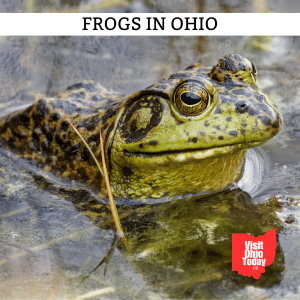



My son was telling me that he had to pick an “ohio” animal to do a report on once back from Thanksgiving break. We landed on your site when looking for what turtles are in Ohio. Thanks for sharing but also thanks for this great site. Followed you on all social, I can’t wait to see what you post about next! We love Ohio and want to discover all it has to offer!
Glad you found us! Thanks for all the follows!
We live on River Road which parallels the Maumee River outside Toledo/Waterville. It’s a 2 lane highway with cars traveling at high speeds. Someone pulled into our drive yesterday and had placed a turtle in a small island in our front yard because it was in the road. I DID relocate it to our backyard (150-200 yards – maybe too far) closer to the river. I have been on numerous sites but can’t identify turtle. Can I submit a picture somewhere for identification?
We are not an authority on turtles, but you may be able to ask the question at the Ohio Department of Natural Resources https://ohiodnr.gov/odnr-help-center. I hope that helps.